  I don’t like to write about newly released firearms. They are always in short supply, which means a tight review schedule, and it seems a wasted effort when I cover a particular firearm extensively, only to find it has been discontinued before the virtual ink has dried. So, now that the Marlin XL7 has been around a couple of years, I hope you won’t mind if I take my time and see what there is to see and use it as an excuse to write about the .270 Winchester cartridge.
I have a soft spot for Marlins. No, not on my head. That would be my bald spot. I mean I have a sense of fondness for the brand. On the twenty fifth day of December, 1957, when I was twelve years old and the next to the last dinosaur died, I was given my first firearm. It was a Marlin 336 lever action rifle, chambered for the .30-30 WCF. I’ll never forget the excitement of opening that box and holding the rifle in my hands for the first time. Just a plain walnut stock, no checkering, lustre blue hardware and a stylized Marlin logo stamped into the hard plastic butt plate. I’m certain of these material facts because the gun is laying right here on a table next to my desk.
The Marlin has followed me through lots of places while deer, black bear and hog hunting and many sessions of recreational target shooting. The gun was pawned, sold and retrieved at least a few times while my wife and I were raising a young family and making our way through military life. The little rifle, unfortunately, also found its way into a wet basement and rusted to a point I thought for sure it was a total loss, but Marlin repaired and refinished so that it shoots and looks just fine.
These days I own a number of Marlin rifles, from .17 HMR to my pet .45-70 Guide Gun. All good guns, all good shooters and all well made, but the gun that has best captured that original traditional American firearm look and feel of my first Model 336, oddly enough, is Marlin’s bolt action Model XL7W. While the XL7W has the comfortable and familiar feel of rifle purchased at a rural country hardware or sporting goods store – when sporting goods meant hunting and fishing paraphernalia, Marlin managed to sneak in some very modern touches and chambered it for venerable .270 Winchester and .30-06 Springfield.
Beyond the blathering…
The Model XL7 is, as noted, a classic hunting rifle. No contrasting wood tips, no spiffy inlays – just clean, nicely figured American Walnut, clean checkering and a very nice and effective soft rubber recoil pad. At a weighed 7 lbs 8 oz, the gun is not a lightweight, but it is also not a heavyweight. it comes in at about the same weight as all popular wood stock mainstream rifles.
The twist rate is right for the .270 Winchester, enough to stabilize the span of 0.277″ bullet weights from 90 – 160 grains. The barrel length, at 22″ is about 2″ shy of the typical 24″ barrel gun, but in line with most mountain rifles. I have a mountain rifle in .25-06 Remington that gives up little in velocity to a 24″ barrel and there are many .30-06 Springfield rifles that have barrels as short as 18½”. It will interesting to see how handload data proves out as most of the manuals show the .270 Winchester as either a 24″ or 26″ barrel. The gun’s price, especially in today’s economic climate, is an excellent value for a non budget built rifle. Cost cutting measures comes in subtle forms, not at the expense of quality. The Marlin just isn’t loaded with superfluous gunk.
Firearm impressions are made in three steps…
The first step is the initial impression of look and feel. I think most people know if the aesthetics of a firearm work for them within the first ten or fifteen seconds of picking up a firearm. The second impression is formed by taking the gun down and seeing how it was put together – quality of assembly, materials and design. The third impression is when the gun is fired, and then the senses are picking up everything about form fit and function. I can’t own a gun for more than 30 – 90 days if all of these impressions aren’t favorable. I liked the look and feel of the Marlin, so…
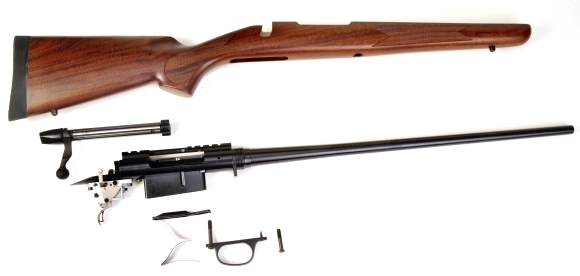 There are, of course, the basics. A tubular action, two opposed locking lugs, push feed and a wood stock… as opposed to Woodstock. Peace and Farm-out. The XL7 has a blind magazine which requires cycling the rifle when it comes time to empty the magazine. Not a particularly big deal. You just set the safety to on and crank away until empty.
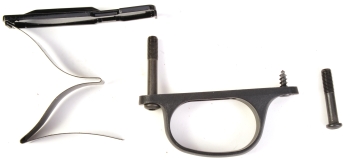 Hardware is comprised of button head socket head screws; fore and aft have machine threads and pass into pillar bedding tubes, the middle is a wood screw. A little odd, but then there is really no reason to frequently remove the trigger guard. Hardware is comprised of button head socket head screws; fore and aft have machine threads and pass into pillar bedding tubes, the middle is a wood screw. A little odd, but then there is really no reason to frequently remove the trigger guard.The trigger guard is fiber filled plastic, the magazine follower is slick plastic that makes feed feel smooth and doesn’t weigh twenty pounds..
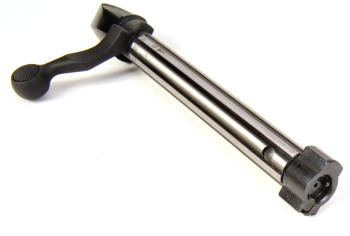 Not a whole lot to say about the Marlin’s bolt. The twin lugs rotate and this is a push feed gun. The bolt has a nifty streamlined shroud, just in case you’re chasing a really fast raccoon on foot and you need to be… wind slippery for speed.
The bolt body is fluted, which gives the gun a look of precise machinery and helps to keep powder residue and other gunk out of the bolt way. The handle is very… Remington in shape, the right size and form. Yes, it takes down for cleaning and no I am not taking it apart to take pictures.
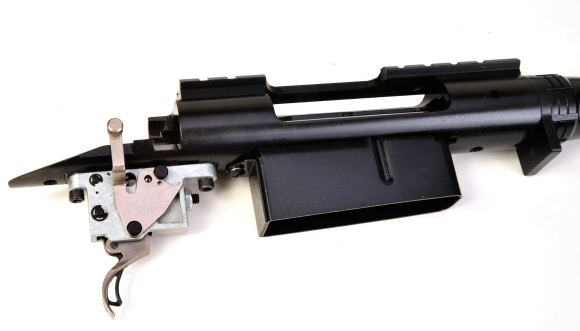 The Marlin employees a Pro-Fire™ trigger. There is no need to draw comparisons with other similar systems as Marlin has their own variation on the theme. The little spur in the center of the trigger is a safety mechanism that prevents a very light trigger from jarring lose or being inadvertently pulled; the spur, the trigger release, must be depressed fully while the trigger is being pulled to release sear engagement. Pull from the factory was light, a tad over 3 lbs, and pull resistance is owner adjustable, by removing the stock and adjusting what Marlin cleverly refers to as the “adjusting screw”. I’m so not use to documentation that names things for what they actually do. On another note. I am glad Marlin anchored the magazine box with a screw so that I won’t have to stare at it for ten minutes while reassembling the gun, trying to remember front to back and up to down.
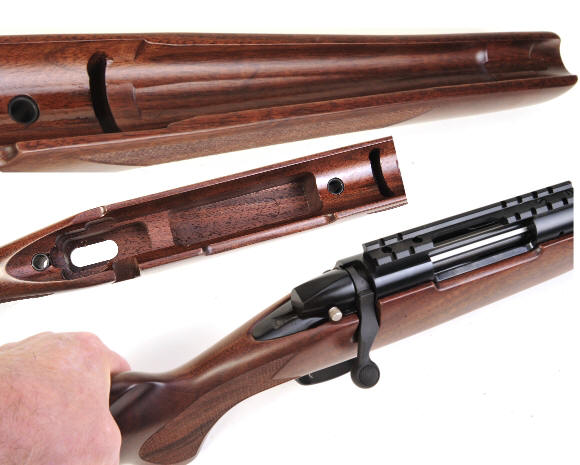 I really like the stock work on the XL7. The inletting is as clean as the outside, well finished for resistance to changes in humidity and all of the exposed metal to wood joining lines are a close fit and well finished. The exterior is the closest thing I have seen to an oil finish. although the poly finish is much more weather resistant and requires virtually no maintenance.
Seis balas. Tamaño no verdadero…
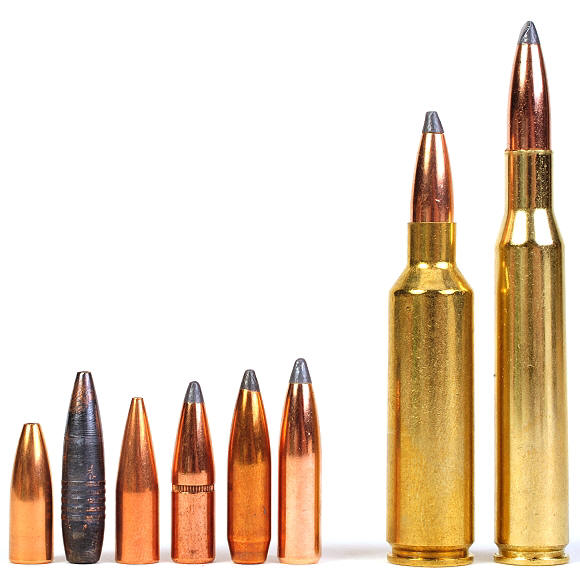 There are lots of 0.277″ bullets available for lots of applications. The six selected represent a decent cross section and of useful weights. The .270 Winchester, with a .30-06 Springfield parent case, is considerably longer than the stubby .270 WSM which, at 79.5 grains holds 12.5 grains more powder.
The 270 Winchester does really… scoot… and shoot
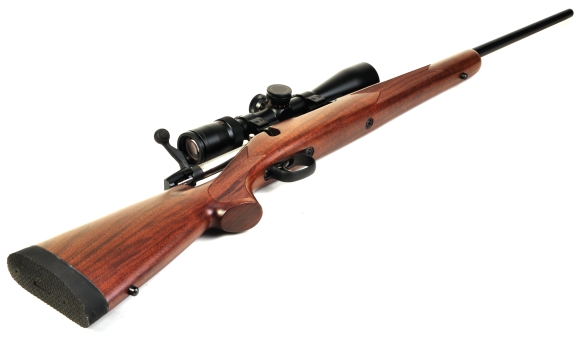 The Marlin is a good shooter. Recoil, although it may be that my shoulder is dead from years of firing artillery shells from five pound guns, is really light. The stock is straight and the recoil pad is excellent and report is actually pretty mild. From anything I saw, the 22″ barrel gave away virtually nothing to a 24″ gun, except weight. The barrel profile isn’t all that slender, but it did heat up considerably after a half dozen big boys handloads. In fact, the .270 Winchester chambered Marlin with a 22″ barrel shot within 175-200 fps of my 24″ barrel 270 WSM with 150 grain bullets.
The Marlin XL7 is easy to load, easy to unload and the bridged scope mounts got in the way of none of it. The safety was positive in actuation and the stock proportions made it easy to set up a scope with proper eye relief. The trigger felt good, once I got use to that little hinged tab under my finger. The gun did not feel hefty even hauling it around all day. I believe the synthetic stocked version weighs nearly one pound less.
 All and all, the Marlin is a very nice gun with a lot of traditional appeal. Accuracy was good, regardless the bullet weight, but the gun seemed to do its best work with bullets in the 130-150 grain range where MOA and sub MOA were the norm. The GS bullet, the speedster in the bunch, shot consistent 1¼” to 1½” groups but, in all fairness, it is a very long solid copper alloy bullet that might require more than a 10″ twist for best performance. The lightweights were in and slightly out of MOA with stable performance, cold or warm barrel.
The XL7 is a very nice hunting rifle and the .270 Winchester is a good long range or close in moderately heavy hitter. Maybe it isn’t a big bear firearm, but I can’t think of much else it wouldn’t bring down handily. I’m very glad to see Marlin doing this kind of work and I think the XL7 is the kind of gun I could have around me for a very long time.
|
|||||||||||||||||||||||||||||||||||||||||||||||||||||||||||||||||||||||||||||||||||||||||||||||||||||||||||||||||||||||||||||||||||||||||||||||||||||||||||
Comments appearing below are posted by individuals in a free exchange, not associated with Real Guns. Therefore RGI Media takes no responsibility for information appearing in the comments section. Reader judgement is essential.

Email Notification